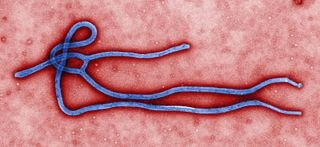The 2014/2015 Ebola outbreak in West Africa shone the spotlight not only on the unpreparedness of local health services and science to deal with the pandemic, but also on the phenomenon of emerging infectious diseases (EIDs).
In an expert review published online today (Monday 2nd November 2015) in Expert Review of Vaccines, Dr. Michael Jarvis (who is a molecular virologist from Plymouth University School of Biomedical Sciences and who is an expert in EIDs and the use of self-disseminating vaccines to control them) identifies self-disseminating vaccines as one potential way forward to deal with future pandemics with potential to cut off such diseases at the animal source before they spread to human populations.
It is the first time that self-disseminating vaccines have been the subject of such a review.
EIDs are an increasing risk to human health. Modern human activity has an irreversible effect on the natural world. Widespread global travel, the spread of agriculture into wildlife habitats, deforestation and urbanisation are bringing humans and wildlife into unprecedented proximity.
In most cases animals are the source of EIDs – Ebola, HIV, avian flu, Hendra, SARS, MERS and Marburg are a selection of such diseases which have spread to human populations from animals. Most EIDs were entirely unknown before they entered the human population.
The challenge, identified in the expert review, is to discover vaccines for these diseases and find ways in which to deliver those vaccines to target animal populations. Self-disseminating vaccines are designed to use virus-based vectors (cytomegalovirus (CMV) which are viruses that are unique to individual species but which have little or no significant impact on that species’ health). The vectors in effect become ‘carriers’ for the vaccine which allow for vaccination across populations where it is difficult to inoculate every animal.
While not a new approach (the review states that a similar method was used to combat myxomatosis and rabbit haemorrhagic fever in European rabbit populations) its adoption has been comparatively slow with a recent acceleration in interest as the method became identified as a way to combat Ebola.
Dr. Jarvis was senior author of the review. He said: “In this review we have explored self-disseminating vaccines as an innovative means to prevent EID transmission from animals to humans. From HIV to Ebola and SARS, highly virulent pathogens are continually emerging from animals into the human population. Our review has been based on discussion with scientists from across the conventional and disseminating vaccine fields, and we have used the experience gained through my own and that of my co-author’s experimental work. We suggest that state-of-the-art disseminating vaccines may have a role to play as a new and potentially powerful strategy to circumvent EID at the animal source before their establishment as the next human pandemic.”
If our reporting has informed or inspired you, please consider making a donation. Every contribution, no matter the size, empowers us to continue delivering accurate, engaging, and trustworthy science and medical news. Independent journalism requires time, effort, and resources—your support ensures we can keep uncovering the stories that matter most to you.
Join us in making knowledge accessible and impactful. Thank you for standing with us!

